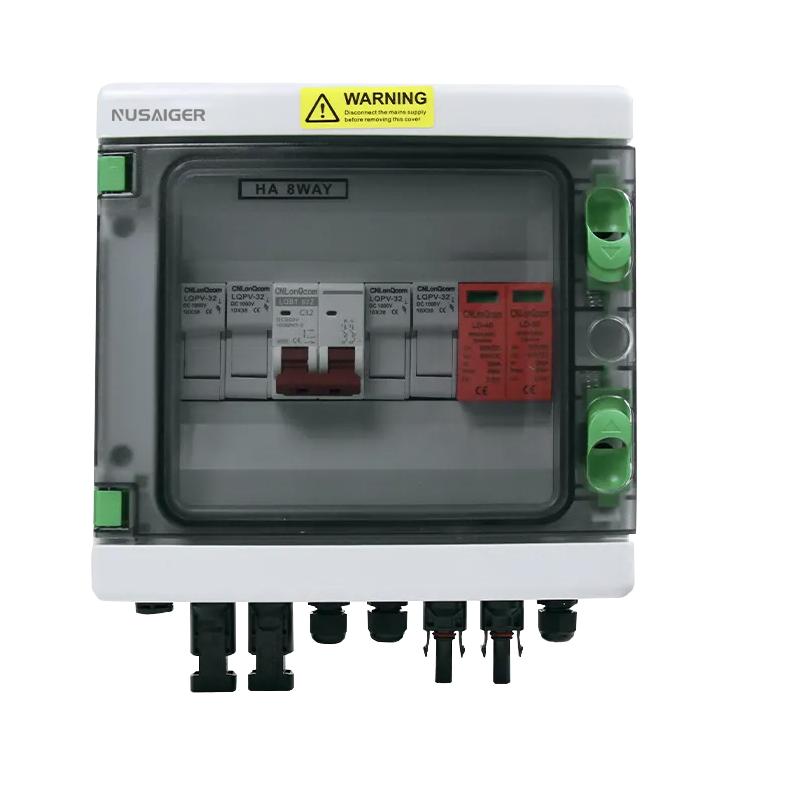Troubleshooting and Maintenance of PV Combiner Boxes: A Complete Guide for Solar Engineers and Operators
Word Count Target: ~10,000 words
1. Introduction
PV combiner boxes are among the most critical components in a solar photovoltaic (PV) system. While their primary role is to combine outputs from multiple strings into a single DC output, they also house protective devices such as fuses, surge protection devices (SPDs), and disconnect switches.
However, like any electrical equipment, combiner boxes are subject to wear, environmental stress, and electrical faults. Proactive troubleshooting and preventive maintenance are essential for ensuring system safety, reliability, and performance. This guide provides a comprehensive roadmap for identifying, diagnosing, and solving combiner box issues, while also highlighting best practices for preventive care.
2. Common Issues in PV Combiner Boxes
Understanding common problems helps operators prepare for timely intervention. The most frequently encountered issues include:
- Blown fuses: Often caused by string overcurrent, faulty solar panels, or short circuits.
- Loose connections: Poorly tightened terminals can lead to arcing, overheating, and even fire hazards.
- SPD failures: Surge protection devices can degrade over time, especially in lightning-prone regions.
- Water ingress: Failed gaskets or improper sealing can lead to moisture damage and corrosion.
- Overheating: Insufficient ventilation, high current flow, or poor component quality may cause thermal stress.
- Communication failures: In smart combiner boxes, monitoring modules may malfunction, leading to data loss.
3. Diagnostic Tools and Techniques
Troubleshooting requires the right tools and a systematic approach. Essential diagnostic tools include:
- Multimeter for checking voltage, current, and continuity.
- Insulation resistance tester (megger) for detecting insulation breakdown.
- Thermal imaging camera to identify hotspots or overheating components.
- Clamp meter for quick current measurements.
- Portable data logger for monitoring smart combiner box signals.
Always perform diagnostics following strict safety procedures, including isolating the combiner box using its disconnect switch before opening it.
4. Step-by-Step Troubleshooting Guide
4.1. Blown Fuse
If a fuse blows repeatedly, inspect the corresponding string for damaged modules, cable faults, or shading issues. Replace the fuse only after resolving the root cause.
4.2. Overheating Components
Use a thermal imaging camera during peak sunlight hours to detect hotspots. Tighten loose terminals and replace degraded components immediately.
4.3. SPD Malfunction
Most SPDs have visual indicators (green = OK, red = failure). Replace failed SPDs promptly, especially before the storm season.
4.4. Water or Moisture Ingress
Inspect the enclosure seals, cable glands, and IP rating compliance. Dry the box, clean corroded terminals, and replace faulty gaskets or enclosures.
4.5. Monitoring Failure
For smart combiner boxes, verify the communication wiring, protocols (RS485, Modbus, Ethernet), and power supply. Firmware updates may also resolve persistent issues.
5. Preventive Maintenance Strategies
Preventive maintenance reduces unexpected failures and prolongs equipment life. A typical maintenance checklist includes:
- Visual inspection for cracks, discoloration, or corrosion.
- Checking torque of all connections and terminals.
- Cleaning dust, debris, and insect nests from the enclosure.
- Testing fuses, SPDs, and disconnect switches regularly.
- Performing thermal scans every six months to detect abnormal heating.
- Validating monitoring signals and data integrity in smart boxes.
6. Safety Considerations
Working with PV combiner boxes involves high DC voltages that can be more hazardous than AC. Always follow these safety guidelines:
- Wear personal protective equipment (PPE), including insulated gloves, arc-rated clothing, and safety goggles.
- De-energize the combiner box using the disconnect switch before opening.
- Use insulated tools rated for high voltage applications.
- Follow lockout/tagout (LOTO) procedures during maintenance.
7. Case Studies in Troubleshooting
Case Study 1: Frequent Fuse Failures in a Commercial Rooftop
A 200 kW rooftop solar system experienced repeated fuse failures in one combiner box. Investigation revealed damaged insulation in one string’s cabling. After replacing the cable and installing higher-quality fuses, the issue was resolved.
Case Study 2: Moisture Damage in Utility-Scale Farm
In a 30 MW solar farm, multiple combiner boxes suffered corrosion due to poor sealing. Operators upgraded the enclosures to IP66 stainless steel models, eliminating recurring issues during the rainy season.
Case Study 3: Communication Loss in Smart Combiner Box
A monitoring system repeatedly lost communication with several smart combiner boxes. Diagnosis revealed interference on RS485 cabling due to poor grounding. Re-routing cables and adding shielding solved the problem.
8. Best Practices for Extending Combiner Box Lifespan
- Install the combiner box in shaded or ventilated areas to reduce heat exposure.
- Regularly update firmware in smart boxes for improved reliability.
- Choose components (fuses, SPDs) from reputable manufacturers.
- Perform predictive maintenance using IoT-based monitoring for early fault detection.
9. Conclusion
Troubleshooting and maintaining PV combiner boxes is not just about fixing issues after they occur—it is about proactive management to ensure system longevity, safety, and efficiency. With the right tools, knowledge, and preventive strategies, solar engineers and operators can minimize downtime, reduce costs, and maximize energy yield.
Whether you are managing a small rooftop system or a large utility-scale farm, effective combiner box maintenance practices will safeguard your investment and optimize performance for decades.



